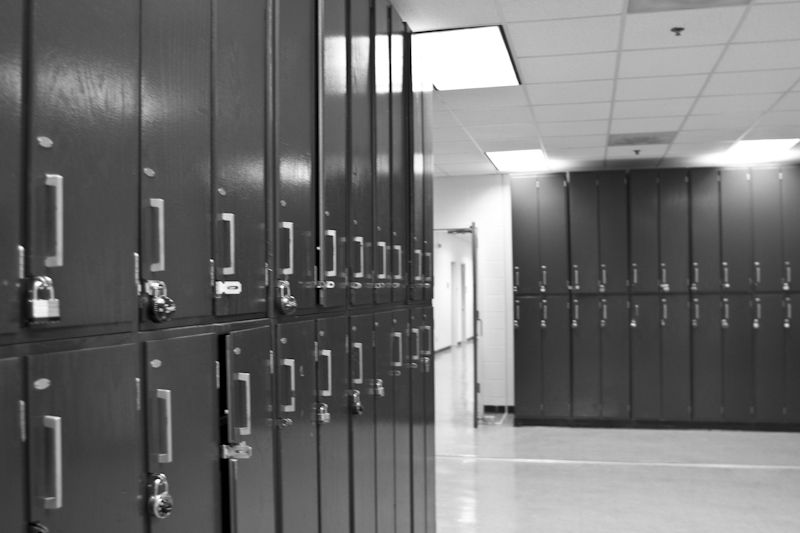 Drop out factories.
Drop out factories.
Since coined by a Johns Hopkins researcher working on high school dropout issues in 2004, that’s the name given to schools that lead our nation in dropout rates, graduating less than 60 percent of their students each year.
Around the country, half of the more than 1 million students that fail to graduate high school each year come from just 12 percent of the nation’s schools, according to U.S. Department of Education statistics.
President Barack Obama, retired General Colin Powell and Secretary of Education Arne Duncan, among others, have taken notice.
Since 1980, dropout rates around the United States have decreased – and graduation rates are up – but nearly one in four public school students still leave high school without a diploma. Broken down demographically, the chances of graduation can be even slimmer.
“Right now, 25 percent of all of our youngsters and 40 percent of our minority youngsters are not finishing high school with their peers,” General Powell said in the introduction to an annual report aimed at tracking the progress and challenges of ending the so-called dropout epidemic.
“This lack of high-quality education has dramatic consequences for individuals, society, the economy, and even our national security,” he said. “We cannot afford excuses.”
It’s an issue that, in 2009, drove President Obama to announce the Civic Marshall Plan – an ambitious, sweeping education plan to increase the country’s graduation rate to 90 percent by 2020 and elevate America to be the world leader in college placement.
Named after former Secretary of State George C. Marshall’s massive effort to transform war-torn Europe after World War II, it is nothing short of a vision to transform our nation’s educational system. To reach the first lofty goal, the nation’s graduation rate needs to improve 1.5 percent every year for the next decade.
So far only Wisconsin has hit the 90 percent benchmark, with Vermont, and a handful of others, not far behind.
Nationally, graduation rates have improved in the past decade, but not in every state. Ten states have witnessed a decline in graduation rates since 2001, according to the updated Building a Grad Nation report Powell introduced. Others still lag far behind.
At least eight states, predominantly in the South, still have graduation rates below 70 percent and hold some of the highest concentrations of drop out factories, according to the most recent Department of Education data.
The number of these drop out factory schools and the students attending them has continued to decrease over the past decade, with suburban and communities in the South seeing the most significant reduction. In more recent years, some urban areas have shown accelerated rates of improvement, but to meet the goals set by the Civic Marshall Plan there’s still much to be done, the report said.
The majority of drop out factories are located in poor urban and rural communities, predominantly in northern and western cities and communities throughout the South, according to a 2004 John Hopkins report.
This week, Secretary Duncan joined the leaders of City Year -- a non-profit dedicated to working with students around the country most at-risk of dropping out -- to announce the launch of a 10-year strategy that, they hope, will leverage the energy of the nation’s youth and provide a road map to urban graduation improvements in some of the nation’s most struggling communities.
“City Year proves that poverty is not destiny,” Secretary Duncan said at the announcement of the program in Washington. “Their work with children in struggling communities is providing the support needed to encourage and help students stay in school and be successful.”
They’re calling it the Urban Graduation Pipeline and, with the support of a $10 million pledge from long-time City Year supporters Jonathan and Jeannie Lavine, will begin to expand their work to more than 1,000 urban schools and 900,000 students at-risk of dropping out.
“We know if you move students to the 10th grade on time and on track they’re four times more likely to graduate high school on time,” said Shaun Adamec, vice president of communications with City Year. “So our strategy is to move students toward that benchmark so they can contribute to that 90 percent goal.”
The goal is a “continuum of support” for students in grades three through nine to keep them on track for graduation. City Year hopes to bring graduation rates in targeted schools up to more than 80 percent in the coming decade, graduating double the number of students in some schools.
At-risk students will get multiple years of intervention and support in school from City Year AmeriCorps staffers to improve attendance rates, develop positive social and emotional behaviors, and elevate academic performance.
“We are launching a Long-Term Impact strategy, which harnesses the talent and energy of City Year’s young leaders as a breakthrough solution for struggling urban schools,” City Year President Jim Balfanz said in an e-mail announcing the project. “Inspired by a vanguard of high-performing, high-poverty schools that have demonstrated success is possible, we believe national service is a new human capital strategy to advance proven reform strategies and directly support the students who need it most.”
City Year AmeriCorps members, college graduates between the ages of 18 and 24 who commit to a year of full-time service, work hand-in-hand with school administrators and teachers to identify the most at-risk students, place them on focus lists to track progress and dedicate time during the school day to work with the students one-on-one and in small groups.
“What makes it so unique is that they’re near-peer,” Adamec said. “The Corps members – simply because of their age, their energy and their idealism – can form a bond with the students in the school that others may not be able to.
“Because they’re able to get to the central reason of why students are getting in trouble, they are able to refer it up the chain of command and help that student out,” he said.
The announcement comes at a time when City Year has seen a groundswell of support from idealistic young professionals stepping forward to serve. Last year, the organization received half a million applications for just 80,000 positions, according to the Corporation for National Community Service.
Already operating in 23 cities around the United States, the Urban Graduation Pipeline expansion will soon place the organization in cities that account for two-thirds of the nation’s dropouts.
Ultimately, City Year is one of more than two dozen groups and non-profits committed to helping make the Civic Marshall Plan a reality.
Photo by Clay Duda | JJIE.org
